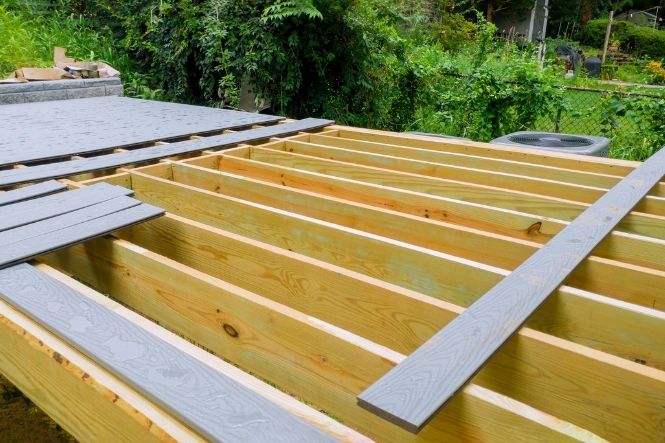Decking had been popular in many other countries, notably Australia, New Zealand and America, before it became the must-have patio replacement in the UK. Those other countries have more predictable weather so decking makes more sense. Its growth in the UK, over the last decade or two, can be attributed to a number of factors.
Why Did Decking Suddenly Become so Popular?
We are having generally better weather, although it’s still unpredictable, and cheaper decking products have become available. Of course, an explosion in home and gardening programmes on the television fuelled the demand, as they often featured decking as part of a quick makeover, making the garden a more usable part of the home.
Where to Use Decking
Decking works best when there are different levels in the garden to bridge, although there’s nothing to stop you putting it in as a flat patio surface. If the decking is raised, as it would be when bridging different levels, air can get to the exposed timbers so there’s less chance of rot. Also, if it is laid on a flat surface, you need to think of ways of preventing pests and litter from getting under it.
Decking is very versatile and can even be used as an extended balcony from a first floor room of a property. Note that building a significant construction like this at the back of your house would almost certainly need building regulations approval and possibly even planning permission, depending on the rules in your local area. Incidentally, this is the reason for the popularity of the narrow Juliet balconies that are often seen on new build apartment blocks, which don’t need approval.
Supporting Posts, Wallplates and Bearers
The layout needs to be planned in three dimensions and, if you want to have many different levels, it might be worth hiring a company to do the whole thing for you. They would then be responsible for calculating the loads and the specifications for the supporting posts and bearers. Where one end or side of the decking is to meet a wall, perhaps at the back of the house, a timber wallplate is fixed to the wall and the bearers suspended with joist hangers.
Posts need to be firmly anchored in the ground with concrete and, where the bearers are to be closer to the ground, they can be raised to the correct level with piers of concrete blocks. It’s best to have those piers where they’ll be out of site under the boards, and use posts for the visible parts of the construction.
For a flat patio area, you should raise the bearers on blocks of your choosing and put galvanised mesh, or perhaps close-weave trellis sections, at the ends and sides to stop vermin and litter getting under the decking. It’s also worth having a few boards that can be removed quite easily, perhaps with screws in a hidden but accessible area, so that you can get under the decking once a year to sweep out the detritus that falls through the gaps between the boards.
The posts, piers and wallplates will all support the horizontal bearers that the decking planks will be nailed or screwed to. They are usually 10cm by 5cm or larger and fixed 45cm apart from each other, although the site may demand a different layout and stronger materials. Each site really needs individual assessment and this can only be a guide.
Decking Boards and Railings
The deck itself is often made from Red Cedar, although virtually any properly treated timber will do the job. Grooved boards are popular in the UK as they give better grip in damp conditions and through the autumn and winter. Use a weed inhibitor, gravel or membrane on the ground below the deck to prevent growth under the boards.
Finally, a word or two about railings. Obviously they’re not necessary on a flat patio deck but you might still want to install some to demarcate the area, or simply to provide your friends and family something convenient to lean on while they eat and drink. On raised decks they become more of a safety issue, and may well be subject to building regulations approval, so check with your local planning office before going ahead.

